Latest photonics and optics news

Exploring the Hidden Secrets of Inorganic Particles and Formulations through X-ray Insights
LUM GmbH offers new solutions with the Gravity Separation & Particle Analyser LUMiReader® X-Ray 440:
The new Gravity Separation & Particle Analyzer LUMiReader® X-Ray 440 now complements the product range of LUM GmbH. Based on the patented and decades-proven STEP-Technology® (Space and Time resolved Extinction…
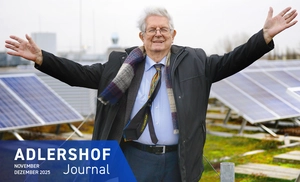
In Memoriam Klaus Thiessen
Optoelectronics specialist and solar energy pioneer:
Professor Klaus Thiessen passed away on 3 July 2025 at the age of nearly 98. The internationally recognised expert in optoelectronics remained a committed bridge-builder between science, industry, and society well…
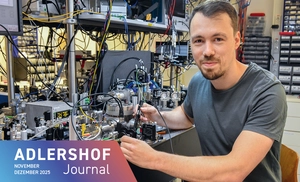
The timekeeper
Oliver Fartmann is working on an improved atomic clock:
What are the paths into science and research? “I was quite good at maths, I think,” says Oliver Fartmann. Good enough, at any rate, to catch the attention of his physics teacher at the Archenhold Gymnasium in…

MBI researchers characterise ultrashort VUV light pulses with electron FROG
New technique enables complete analysis of femtosecond pulses in the vacuum ultraviolet range:
A team of researchers at the Max Born Institute managed to fully characterise few-femtosecond-long light pulses tunable in the vacuum ultraviolet. These results unlock the possibility for studying valence electron…

Breakthrough in attosecond science
Research team from MBI and DESY develops a plasma lens that can focus attosecond pulses, thereby overcoming significant limitations:
A team of researchers from the Max Born Institute (MBI) in Berlin and DESY in Hamburg has demonstrated a plasma lens capable of focusing attosecond pulses. This breakthrough substantially increases the attosecond…
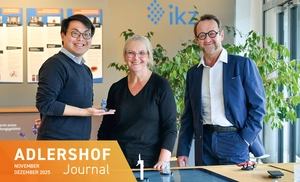
Crystals and careers
How research is turned into business:
New technologies require one thing above all else. They take time. It takes years for a good idea to grow into a viable spin-off,” says Thomas Schröder, director of the Leibniz Institute for Crystal Growth (IKZ) in…

Energy of charge carrier pairs in cuprate compounds
Measurements at BESSY II contribute to a better understanding of high-temperature superconductivity:
High-temperature superconductivity is still not fully understood. Now, an international research team at BESSY II has measured the energy of charge carrier pairs in undoped La₂CuO₄. Their findings revealed that the…
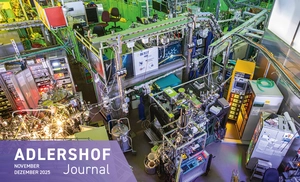
Time matters
Which research questions call for short measurement times, and which analyses require longer ones? A brief journey through time and the Adlershof campus:
Watching molecular and atomic building blocks while they work? This is made possible by operando studies. Such deep insights at an atomic resolution are facilitated by BESSY II, a research facility operated by the…

Electrocatalysis with dual functionality – an overview
Synchrotron sources provide insights into complex reactions and can thus help in the development of hybrid electrolysers:
Hybrid electrocatalysts can produce green hydrogen, for example, and valuable organic compounds simultaneously. This promises economically viable applications. However, the complex catalytic reactions involved in…

Phosphorous chains – a 1D material with 1D electronic properties
One-dimensional electronic properties of a material were experimentally demonstrated for the first time at BESSY II:
For the first time, a team at BESSY II has succeeded in demonstrating the one-dimensional electronic properties of a material through a highly refined experimental process. The samples consisted of short chains of…
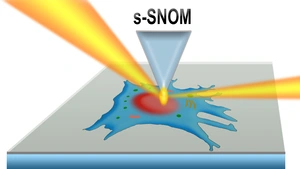
What vibrating molecules might reveal about cell biology
At BESSY II, molecular vibrations in tiny biological samples can now be detected and analysed:
Infrared vibrational spectroscopy at BESSY II can be used to create high-resolution maps of molecules inside live cells and cell organelles in native aqueous environment, according to a new study by a team from HZB…

Winds blow across Mars at speeds of up to 160 kilometres per hour
New study with DLR participation helps to improve our understanding of the Martian atmospheric dynamics:
On Mars, ‘dust devils’ and winds reach speeds of up to 160 kilometres per hour – stronger than previously thought. This is demonstrated by a new study from an international research team led by the University of…

Perovskite solar cells from Germany are competing with China’s PV technology
Kevin J. Prince and Siddhartha Garud receive HZB 2025 Technology Transfer Award:
Photovoltaics is the leading technology in the transition to clean energy. However, traditional silicon-based solar technology has reached its efficiency limit. Therefore, a HZB-team has developed a perovskite-based…
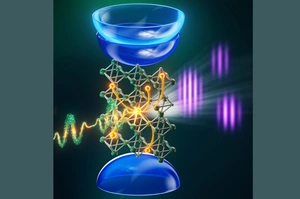
Watching bandgaps in motion – attosecond interferometry of solids
Research team establishes a broadly applicable, all-optical probe of band-structure dynamics in solids:
The bandgap, i.e. the energy gap between the highest lying valence and the lowest lying conduction band, is a defining property of insulating solids, governing how they absorb light and conduct electricity. Tracking…

Rydberg Photonics develops key components for quantum applications
FBH spin-off targets a new generation of compact, scalable, and robust photonic solutions:
A new era of compact, scalable, and robust photonic solutions is being ushered in by Rydberg Photonics GmbH, a Berlin-based spin-off from the Ferdinand-Braun-Institut (FBH). The company builds on FBH’s unique hybrid…
Events / Dates
Max Born Hall
WISTA Conference Centre / BESSY II
-
BESSY@HZB User Meeting / Bunsen-Saal
-
Leap Quantum Technology Hub & Events